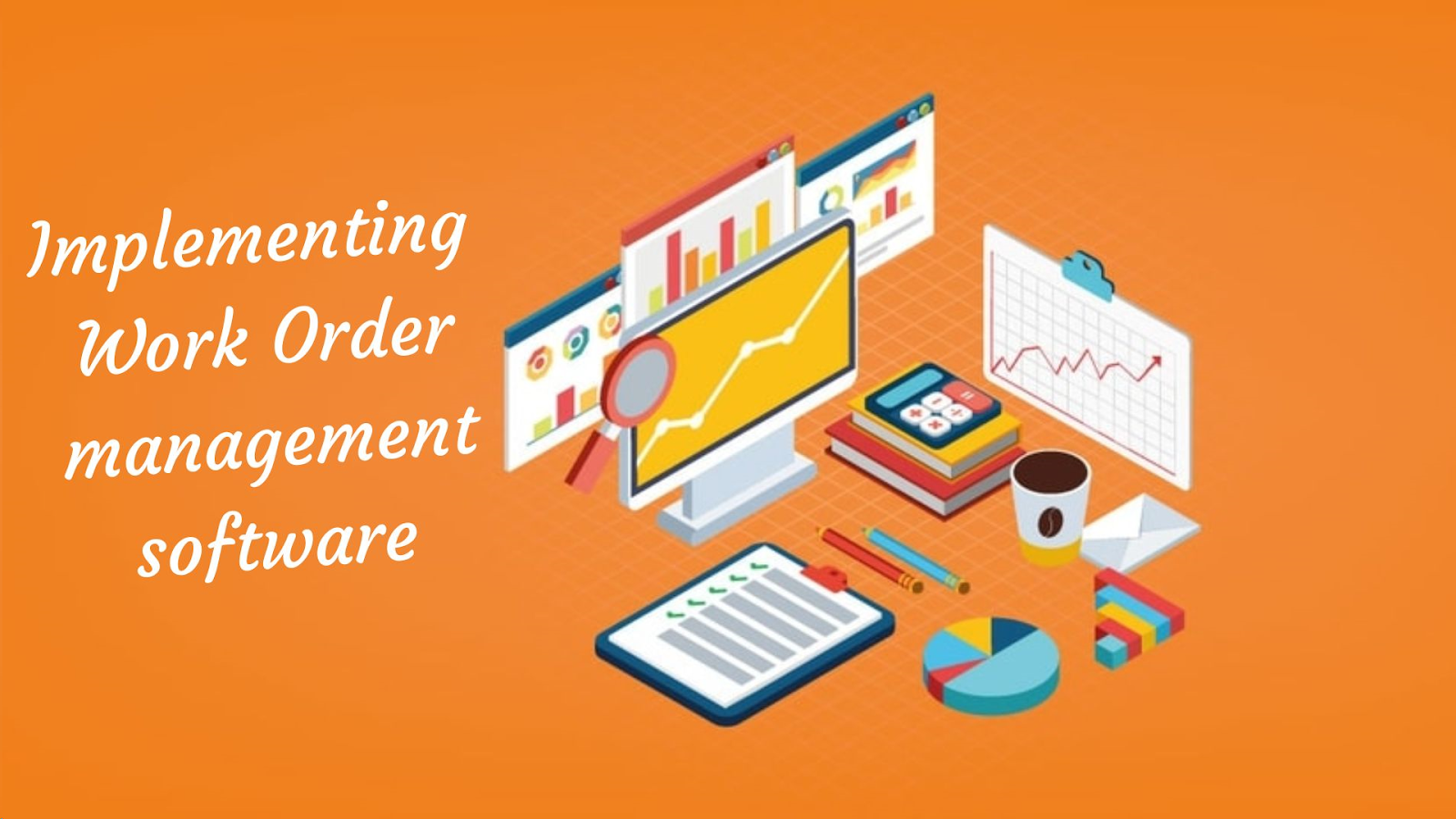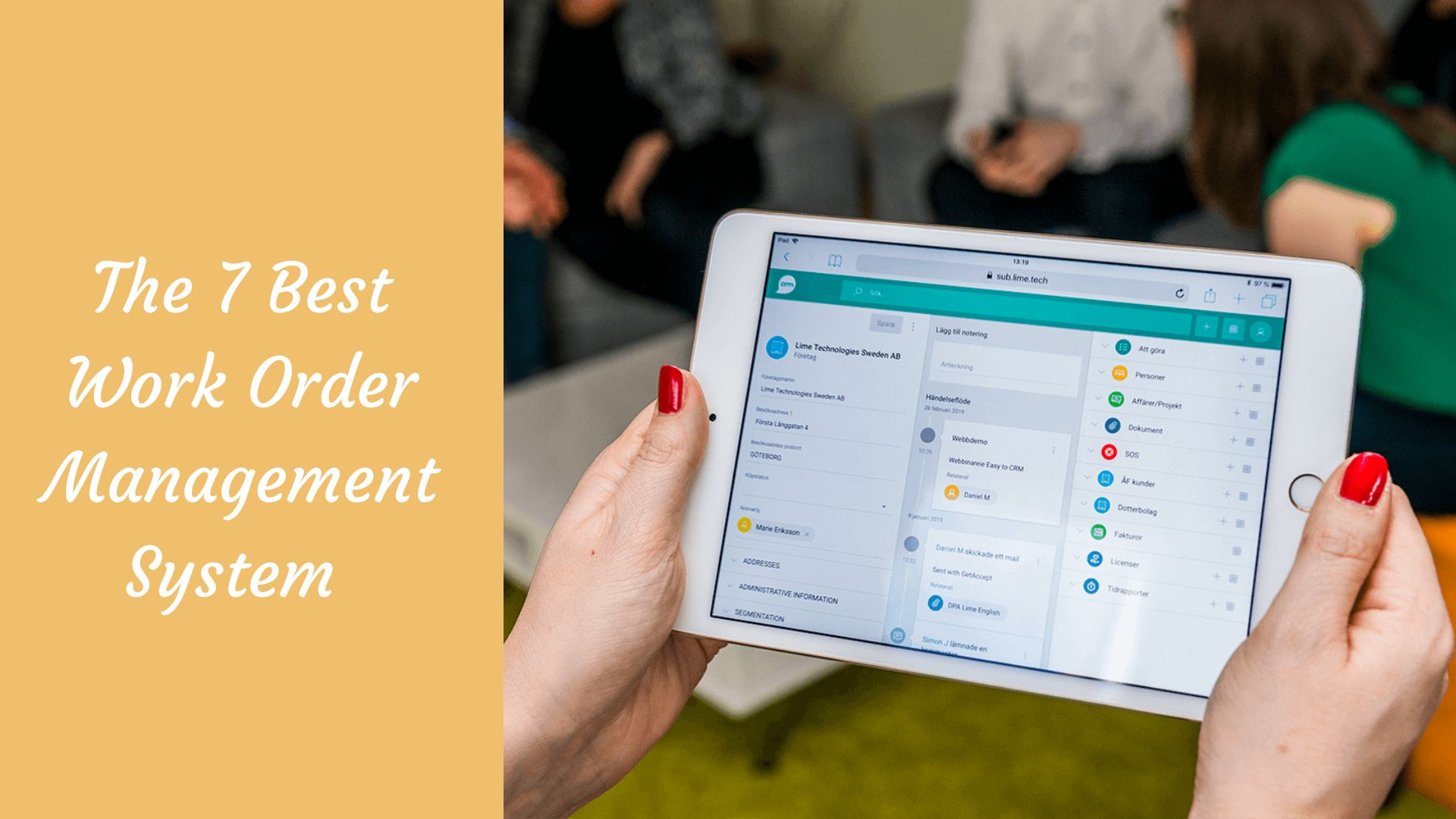
How Implementing work order management software helps your organization
Shubham Vakharia |
22 Jun 2024 |
12:21 PM
- Understanding Enterprise Asset Management (EAM)
- Features of Enterprise Asset Management (EAM)
- EAM and CMMS - What is the difference?
- Benefits of EAM
- EAM examples in business sectors
- Successful Implementation of EAM - Getting Started
- Conclusion

The 7 Best Work Order Management System
Kirti Prakash 22 Jun 2024 | 07:02 AMDiscover the ideal workorder maintenance system to streamline your operations. Our comprehensive guide covers the latest in task management, scheduling efficiency, and maintenance tracking to boost productivity and minimize downtime....
Enterprise Asset Management (EAM) keeps equipment in good shape. It reduces operational costs and boosts uptime. EAM includes work management and asset maintenance. It also deals with planning, scheduling, and safety.
In the IoT era, EAM integrates AI and analytics. AI analyzes data from instrumented assets. These insights improve decision-making. EAM enhances efficiency and prevents issues. It maximizes investments in physical assets.
Understanding Enterprise Asset Management (EAM)
EAM is crucial for organizations with many assets. Assets vary, from railroads to windmills. Best EAM practices provide control and efficiency. They centralize asset information and automate workflows. EAM prevents issues and ensures warranty compliance.
AI-powered monitoring offers valuable insights. It maximizes asset reliability and usability. EAM extends equipment lifecycles and improves ROI. IoT, AI, and analytics enhance maintenance. They meet safety requirements and unify processes. EAM consolidates all asset management systems.
Features of Enterprise Asset Management (EAM)
1. Asset Data Management - Access asset data at any point in an asset's life. Stay organized and informed throughout. Ensure easy access to vital information.
2. Work Order Management - Identify issues and assign technicians. Create and manage work orders for staff and contractors. Track and organize upcoming tasks.
3. MRO Material Management - Manage MRO materials for cost control. Maintain a clear view of inventory procurement. Adapt parts management to facility material demands.
4. Labor Management - Oversee employee and contractor training and certification. Ensure they're equipped for asset management roles.
5. SLA Management - Maintain contract compliance and cost control. Handle contracts with various stakeholders. From creation to management, oversee the contract lifecycle.
6. Report and Analytics - Analyse asset performance for early issue detection. Gather facility-wide key performance indicators. Improve business decisions with insightful data.
7. Financial Management - Collect work order cost data. Integrate it with finance software for accounting and expense management.
8. Mobile Capabilities - Read meters, capture electronic signatures, and use barcodes. Leverage smartphone features like photos and voice-to-text. Gather information and ease collaboration.
9. Cloud-based solutions - Opt for SaaS, cloud-based, or hybrid cloud solutions. Enhance cost control and system flexibility. Reduce reliance on IT for improved efficiency.
10. Supply Chain Management - Include assets and maintenance materials in the supply chain. Integrate EAM with supply chain systems using IoT. Enhance efficiency by connecting asset management and supply chain processes.
EAM and CMMS - What is the difference?
EAM and CMMS serve different purposes in asset management.
CMMS streamlines maintenance during an asset's operational phase. It focuses on automating maintenance tasks and inventory control. EAM covers an asset's entire lifecycle, from acquisition to disposal. It's suitable for organizations with many sites and extensive user bases.
EAM offers a broader perspective and helps focus on actions. It integrates finances, skills, materials, and information for better decision-making.
Benefits of EAM
-
Enhanced ROI
EAM systems enable continuous asset monitoring, extending their lifespan. Improved asset performance contributes to a higher return on investment. Even a 5% to 10% increase in asset life can yield significant benefits for your organization.
-
Planned Maintenance
Scheduling maintenance is a crucial feature that helps prevent unexpected breakdowns. This can be costly and disrupt productivity. Regular, planned maintenance is more cost-effective than addressing sudden failures, such as Proptor. Its features ensure that every asset receives timely maintenance. It also helps you track and manage maintenance records.
-
Improved Decision Making
Access to critical information empowers better decision-making based on solid data. It eliminates the need to rely on assumptions. Underperforming machinery needs attention. Excessive maintenance costs are a concern. EAM provides valuable insights. that improves decision-making. It also reduces uncertainty with EAM data.
-
Simplifying Tasks
Big tasks can become easy. Tracking assets is a tough job. EAM boosts productivity and cuts costs. Imagine monitoring all aspects. EAM software tracks maintenance. The maintenance team can use the software. It makes their job easier.
-
Reduced Manual Effort
Less paperwork means fewer mistakes. Digital documents are easy to search and store. They're quick to access and you cannot delete them. Paperwork can lead to major errors. Incorrect data entry can be disastrous. EAM reduces human involvement that results in more accurate data.
-
Enhanced Customer Experience
Quick problem resolution pleases customers. EAM provides valuable customer analytics. Communicate regular updates. Good service leads to word-of-mouth promotion. It builds trust and retains customers. Attracts potential new clients too.
-
Better Efficiency
EAM simplifies multi-location tracking. It aids in cost-cutting and meeting demands. EAM improves performance and inventory management as well. You can enhance efficiency with EAM systems.
-
Productive use of assets
EAM handles risk and removes procedures. It designates resources to reduce risk. EAM offers a full asset picture. It shows asset location and usage. You can sell or move unused assets.
-
Regulatory Compliance
Many small and medium-sized enterprises operate in regulated industries. These firms need to capture and report data. It shows their compliance with regulatory requirements.
Asset tracking helps with regulatory compliance. It covers equipment maintenance, calibration, and testing. An advanced asset tracking software can streamline your reporting requirements. Generate detailed compliance reports in minutes. Manual compilation would take months.
-
Gives Peace of Mind
Asset tracking software ensures accurate tracking. It helps pass audits, both internal and external. Real-time tracking aids scaling and data provision. It's automated, making data available to customers, auditors, and vendors.
Effective asset tracking and inventory control rely on staffing and barcode solutions. These solutions help to manage assets better and augment companies bottom-line.
EAM examples in business sectors
EAM manages assets from start to finish. It tracks, maintains, and optimizes them. This boosts efficiency and profits. It's useful in many industries. EAM reduces downtime and improves productivity.
Here are some examples of EAM implementation in different business sectors:
- Manufacturing: In manufacturing, EAM watches over equipment and tools. It helps companies schedule preventive maintenance, manage spare parts inventory, and reduce downtime. Manufacturers can also track asset performance data to identify opportunities for process optimization.
- Energy and Utilities: EAM is vital for monitoring power plants and pipelines. It prevents failures, saves energy, and maintains compliance.
- Transportation and Logistics: EAM manages fleets and railways. It schedules maintenance, tracks fuel use, and optimizes routes for cost-effectiveness.
- Healthcare: Hospitals rely on EAM to handle medical equipment and ensure safety. It maintains critical assets, including MRI machines, X-ray equipment, and HVAC systems. Effective EAM in healthcare helps reduce equipment downtime, ensuring better patient care.
- Oil and Gas: EAM is crucial for overseeing offshore platforms, pipelines, and refineries. It prevents breakdowns, reduces environmental risks, and enhances personnel safety.
- Agriculture: In agriculture, EAM manages farming equipment, vehicles, and irrigation systems. It aids in optimizing maintenance schedules, improving crop yield, and reducing operational costs.
- Retail: Retail businesses use EAM for store assets. These include refrigeration systems, point-of-sale terminals, and lighting. Efficient EAM helps retailers reduce energy consumption and maintain a comfortable shopping environment.
- Government and Public Sector: Governments use EAM for managing infrastructure assets. These include roads, bridges, and public buildings. EAM systems enable efficient maintenance and ensure public safety.
- Airlines and Aviation: Airlines use EAM for plane, ground support equipment, and facilities management. This enhances safety, reduces downtime, and helps airlines meet stringent regulatory requirements.
- Construction: Construction companies use EAM for managing heavy machinery, vehicles, and construction equipment. This ensures the timely completion of projects and minimizes equipment breakdowns.
AM systems extend asset life, reduce costs, and enhance productivity in these sectors. They ensure compliance and offer real-time insights for informed decisions. This leads to enhanced efficiency and a competitive edge in each industry.
Successful Implementation of EAM - Getting Started
EAM's benefits and ROI rely on software choice, implementation, and personnel commitment. To achieve optimal outcomes, organizations should:
-
Defining your requirements and expectations for asset management software is key. Choosing the right software is vital for EAM success. Start with clear requirements and expectations.
-
Check and compare different alternatives. Selecting the right asset management software requires an investment of time and resources. Check your options and seek insights from specialists to match your organization's needs
-
Prepare asset data for use. For improved operations, software data should be accurate, well-organized, and accessible. You must spend adequate time and effort on data preparation before implementation.
-
Install and test the required software and hardware. Before EAM implementation, it is valuable to install and test the necessary software. This process can help identify and address glitches and more significant issues.
-
Input asset data into the new system. After setup and testing, add asset data. Get the system ready for use. Organize data for operations.
-
Provide training for EAM staff. Successful EAM relies on training and support for staff. It's a critical investment for implementation success. Well-trained, confident staff maximize EAM benefits.
Organizations invest in EAM to enhance their business operations. These steps help ensure a successful EAM implementation and maximize benefits for organizations.
Conclusion
If you want your company to advance, install Enterprise Asset Management (EAM) from Proptor. It improves businesses by managing assets. It saves costs for your company. But each company's needs are different. It's best to build EAM on a smart foundation.
Smart approaches simplify systems and boost EAM benefits. It cuts costs, enhances asset performance, and boosts profits. For long-term organization success, EAM software is a must.
EAM helps manage things better. It saves money and boosts profits. It works for different kinds of companies. You need to plan and choose the right software. You also need to train your staff. EAM benefits many industries. It reduces problems and helps with important decisions. You can save money and make things work better with EAM.